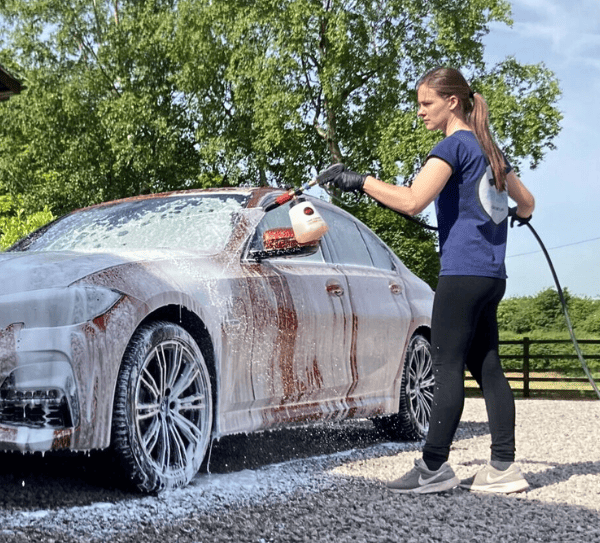If you’re getting into detailing, and you want your car to have that mirror finish, then you’ve probably heard of glazes and polishes. But what’s the difference between these detailing products, and which do you need to make your car look it’s best.
In this article, I’ll be talking about the difference between a glaze and a polish, so you can decide which you should go for. So let’s get started.
The Quick Answer
Glazes temporarily fill in minor scratches in the paint’s clear coat, whilst polishes remove the scratches permanently. Glazes and polishes are both used to make a car look shinier by counteracting the dullness caused by light scratches in the clear coat.
Glazes are a temporary and non-aggressive fix. They simply mask the minor flaws in a car’s clear coat to create a smooth finish so that the light reflects evenly creating a shinier appearance.
Instead, polishes tackle the issue of an uneven clear coat by removing a layer to expose a fresh flat layer that the light will reflect off evenly. Hence, polishes are a more permanent and aggressive solution.
What Makes a Car Look Shiny?
To properly understand the difference between glazes and polishes, you need to know what actually makes a car’s paint look shiny.
The primer helps the base coat, which is the colour of your car, bind to the car’s surface. The clear coat then sits on the top.
The purpose of the clear coat is to protect the base coat. It’s roughly 3 times thicker than than the base coat, and it protects it from fading and damage.
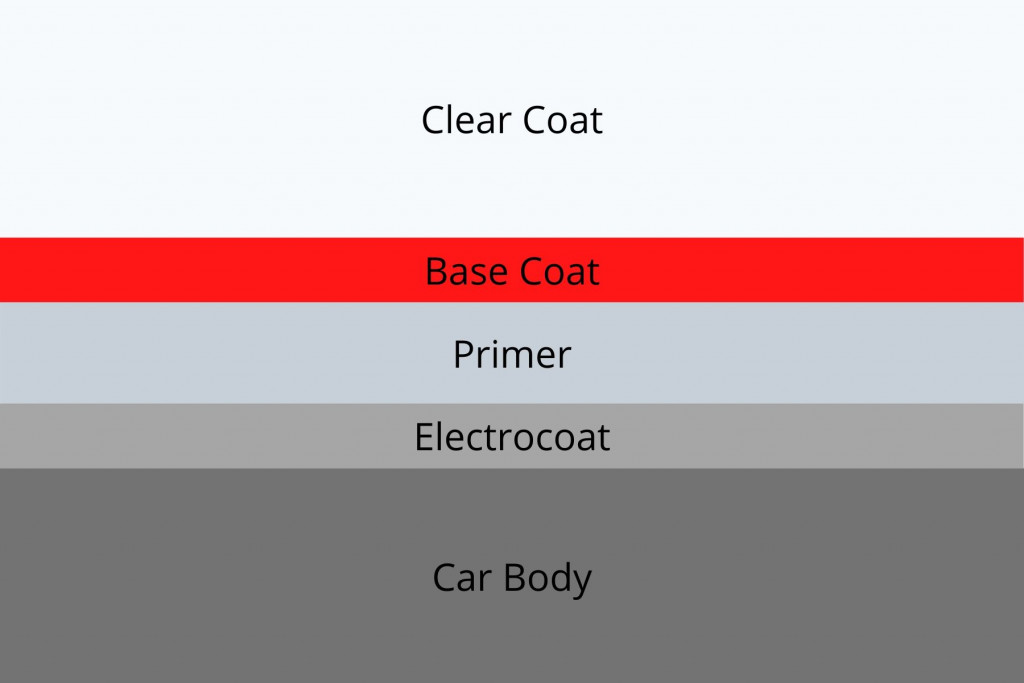
Okay, so why does all this actually matter then? Well, it’s important to understand that it’s the clear coat that causes your car to either look shiny, or dull.
Scratches in this clear coat cause your car’s paint to look flat and dull. Now I’m not talking about deep scratches that you can see all the time. I’m talking about the super fine swirls and marring that’s caused by poor washing technique.
Check out this complete guide to washing your car without causing scratches.
Check out this diagram.
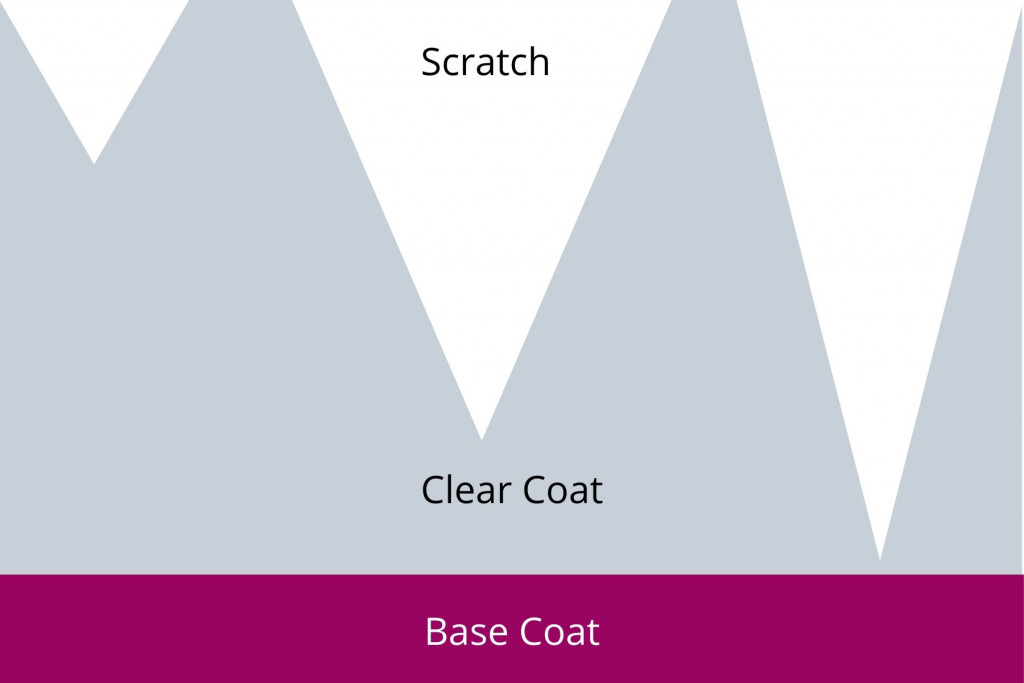
You can see these type of scratches in direct sunlight, and they tend to look like spider webs or swirling.
But why do they make your car look flat and dull?
It’s due to the way the light reflects.
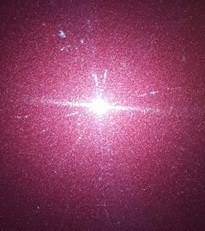
When the paint’s surface is completely flat and smooth, then the light will reflect evenly, causing the car to look shiny. When there are loads of small scratches, the light doesn’t reflect in the same way, giving it a lack lustre finish.
Now let’s talk about how glazes and polishes fix this issue and cause your paint to look much shinier.
What is a Glaze?
Glazes work by filling in the scratches in the clear coat, to help create an even finish allowing the light to reflect properly giving your car a shinier appearance.
Glazes aren’t a permanent fix. Instead, they simply mask the scratches using fillers. They are strictly for enhancing your paint’s finish, and not protecting it, like a wax does.
If you want to use a glaze on your car, then you can apply it either glaze by hand, or a machine polisher with a soft pad after washing (you may also want to decontaminate the car after washing if necessary)and drying the car. Finally, it can be buffed off using a microfiber towel.
You’ll want to apply a wax over the top of a glaze to make sure the finish is protected. It’s usually not recommended to apply a sealant over the glaze because sealants need to properly bond to the paint, and they won’t do this if a glaze is on the surface so the durability will suffer.
I use a glaze called Black Hole by Poorboy’s, which is really great for covering up minor swirls.
It’s important to note that glazes don’t cover deep scratches. If you can see the scratch in low level light, then a glaze won’t cover it. It’s just used to make the paint look shinier by filling in the super fine clear coat scratches.
Key Points:
- Glazes cover up scratches using fillers to create a smooth reflective surface.
- They don’t remove scratches in the clear coat, they only give the temporary impression that they are gone by using fillers.
- Glazes only cover light scratches in the clear coat, not scratches that look very visible in natural light.
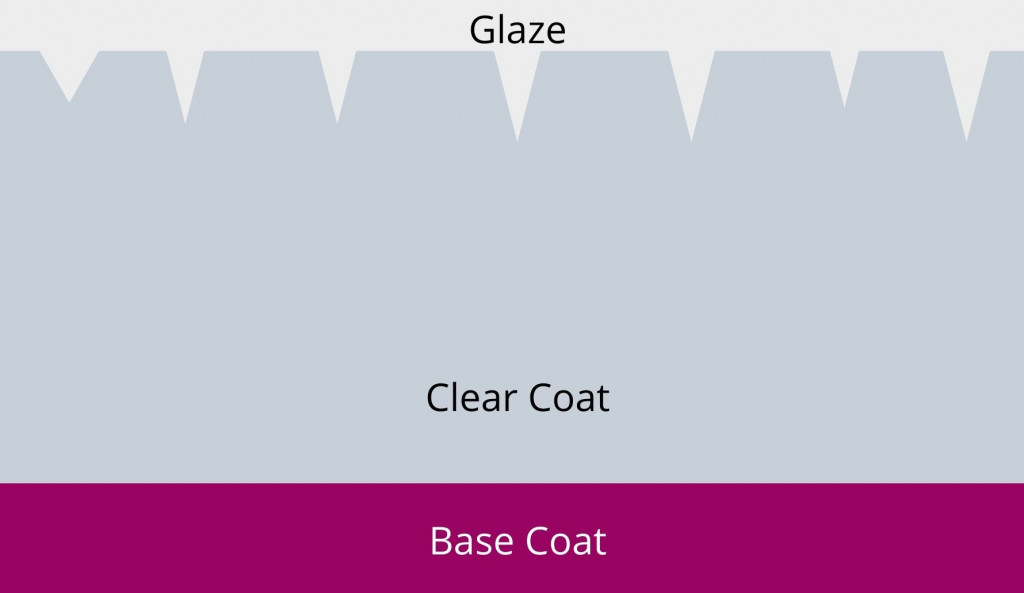
Check out my complete guide to glazes to learn more about this type of product.
What is Polish?
Polishes work completely differently to glazes. Instead of masking the scratches using fillers, polishes actually remove the scratches.
This is the important distinction. Polishes are a more permanent, and a more aggressive solution to enhancing your paint’s shine. Check out the diagram below.

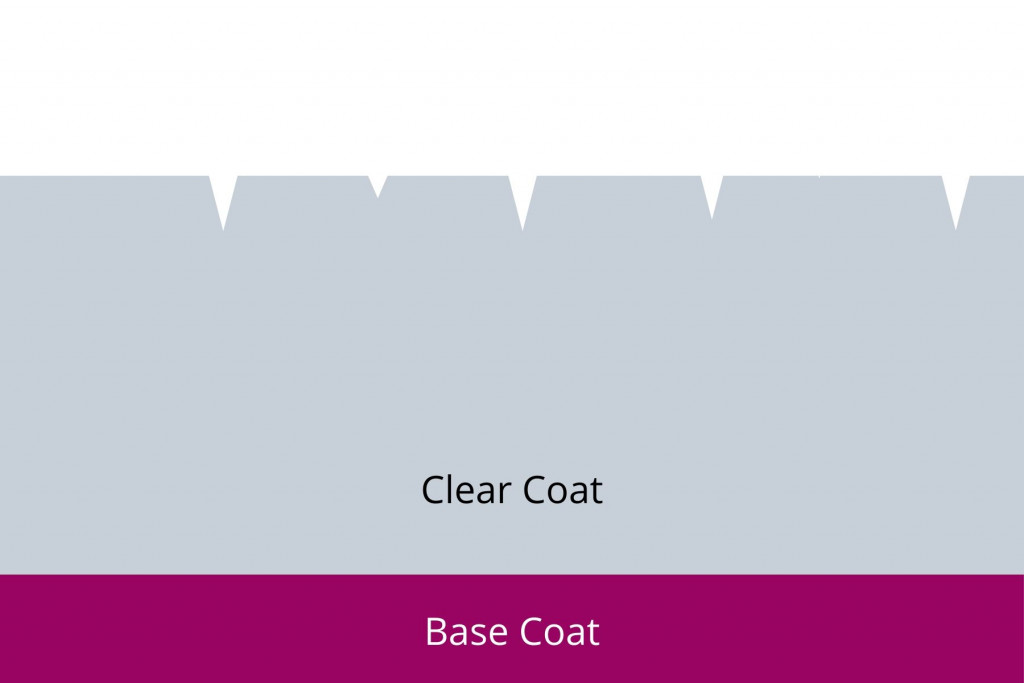
Here you can see what polishes actually do. They use abrasive particles to remove a layer of the clear coat to create a smoother finish that reflects light more evenly, and consequently, looks shinier.
This can either be done by hand, or using a dual action machine polisher. Of course, machine polishing is far more efficient and provides better results.
Notice that the polish didn’t remove all the scratches. Instead, it just removes the ones that aren’t very deep.
To remove the deeper scratches, you need a compound. This is a more aggressive version of a polish which cuts the paint away faster to get a smoother finish.
Check out my article comparing compounding and polishing to learn more.
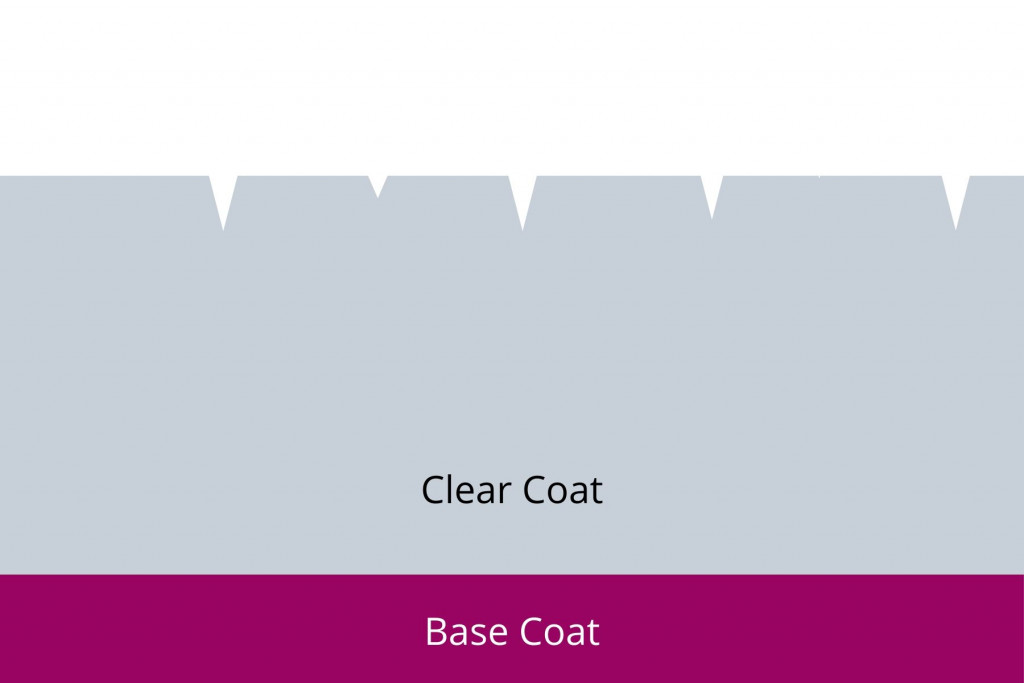
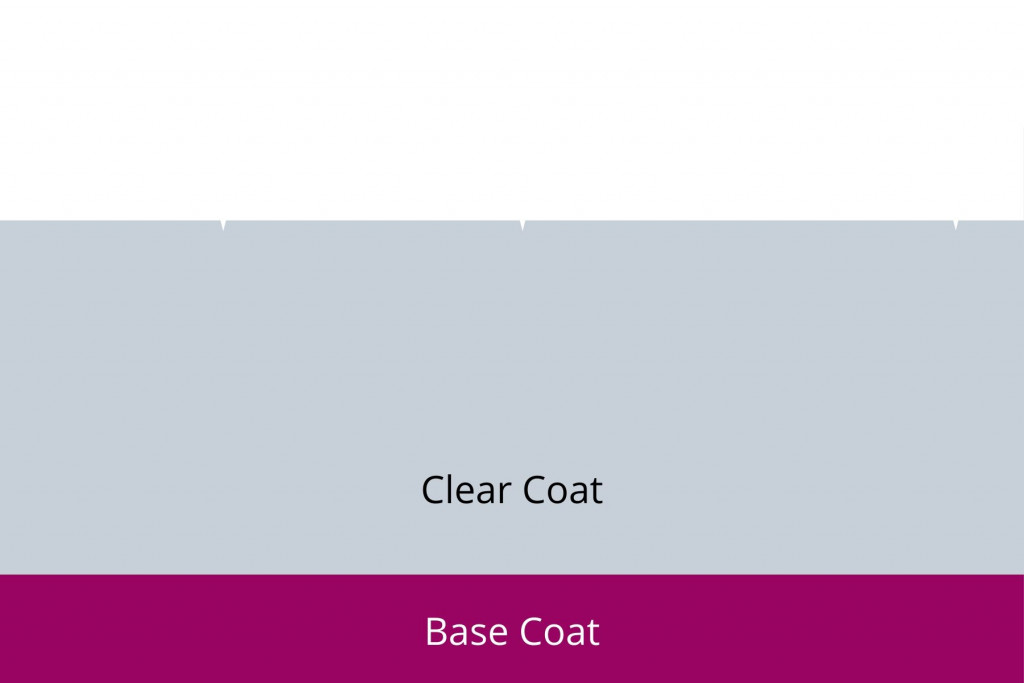
Polishes vs Glazes
Okay, so now we’re clear about exactly what polishes and glazes do, you’re probably wondering which you should choose. Here’s a quick table to summarise the differences between the two products.
| Polishes | Glazes |
| Removes part of the clear coat to remove scratches and produce a smooth a flat surface | Covers scratches using fillers to create the illusion of a smoother surface |
| Permanent | Temporary |
| Irreversible process | Reversible process |
The main thing to consider is the permanency. Of course, with polishes, you are eliminating the scratches so you get actually get a shinier finish. With glazes, you’re just creating an illusion that they’re gone.
The issue with polishing is that you only have so much clear coat on your car. You can’t polish your paint’s finish indefinitely, or you’ll be left with no clear coat.
Glazing on the other hand, can be done as often as you’d like, because you’re only filling in the surface scratches.
My personal recommendation, is to try a glaze first. If you’re not happy with the finish, and want a more permanent solution, then jump up to a polish. This is the safest thing to do because it stops you unnecessarily removing clear coat.
All in One Polishes
There are also some products out there that are glaze and polish all-in-one. That means that they’ll have some cutting ability (like a polish) and some filling ability (like a glaze). They also will contain some kind of wax and sealant to protect the paintwork too.
Some of the most popular glaze and polish all-in-one’s are Autofinesse Tripple, and Autoglym Super Resin Polish.
Keep in mind though, that the cutting ability will be quite limited. They tend to be more closely related to glazes. However, that does make them a pretty safe option for anyone looking to get a glossier finish.
The Complete Process
Polishes and glazes are not the only two products you can use to enhance the finish of your car. There is actually a complete process you can use to get the ultimate finish. Here’s a quick summary of some of the other products involved.
Step 1: Decontamination
We’ve not really spoken about this yet, but contaminants on your paint’s surface can also cause it to look dull and flat. This is a separate issue to scratches.
Contaminants also cause unevenness in your paint which prevents light reflecting and your paint looking super slick and shiny. So what are the potential contaminants? Well, here are some of the most common.
- Bird droppings
- Road tar
- Tree sap
- Bugs
- Water spots
- Paint overspray
- Iron particles
Glazes and polishes can’t remove these, because they’re bound to your paint’s surface. Instead, you’ll need to use a clay bar to lift these from your paint. You can also use an iron remover spray to dissolve the iron particles bound to your finish.
The issue with using a clay bar though is that it does actually cause some marring and swirls itself which need to be corrected in step 2. Check out this article for more info on the effects of clay.
Step 2: Compounding and polishing (paint correction)
The next step, is to compound your car. This is usually done using a machine polisher, and it aims to remove the deeper scratches in your paint’s clear coat to create a smoother finish.
Compounding is more aggressive than polishing, so it needs to be done first.
Compounding can cause “hazing” which makes the paint look dull. You then need to use a polish to remove this haze. Polishing aims to refine the finish as much as possible to create a mirror like appearance.
Check out my article comparing compounding and polishing to learn more.
Step 3: Glazing
Although compounding followed by polishing aims to remove all the clear coat scratches to create shine, some detailers like to use a glaze as well. This creates an even glossier finish and is an essential step for show cars.
Keep in mind though, that you will usually only be able to apply a wax over your glaze, rather than a sealant because the sealant won’t bond properly to a glazed finish.
Check out my complete guide to glazes to learn all about them.
Step 4: Paint Protection
There are three main methods of paint protection: waxes, sealants and ceramic coatings.
- Waxes are usually the least durable, but can be applied over glazes. They produce a warm shine.
- Sealants are more durable than waxes but can’t be applied over glazes in most cases. They produce a wet-looking finish.
- Ceramic coatings are the most durable. Most often they are applied by professional detailers, but you can do it yourself at home.
Thanks for reading! I hope you’ve found this article helpful. Don’t forget to check out the rest of the blog to learn more about getting your car looking its best.

